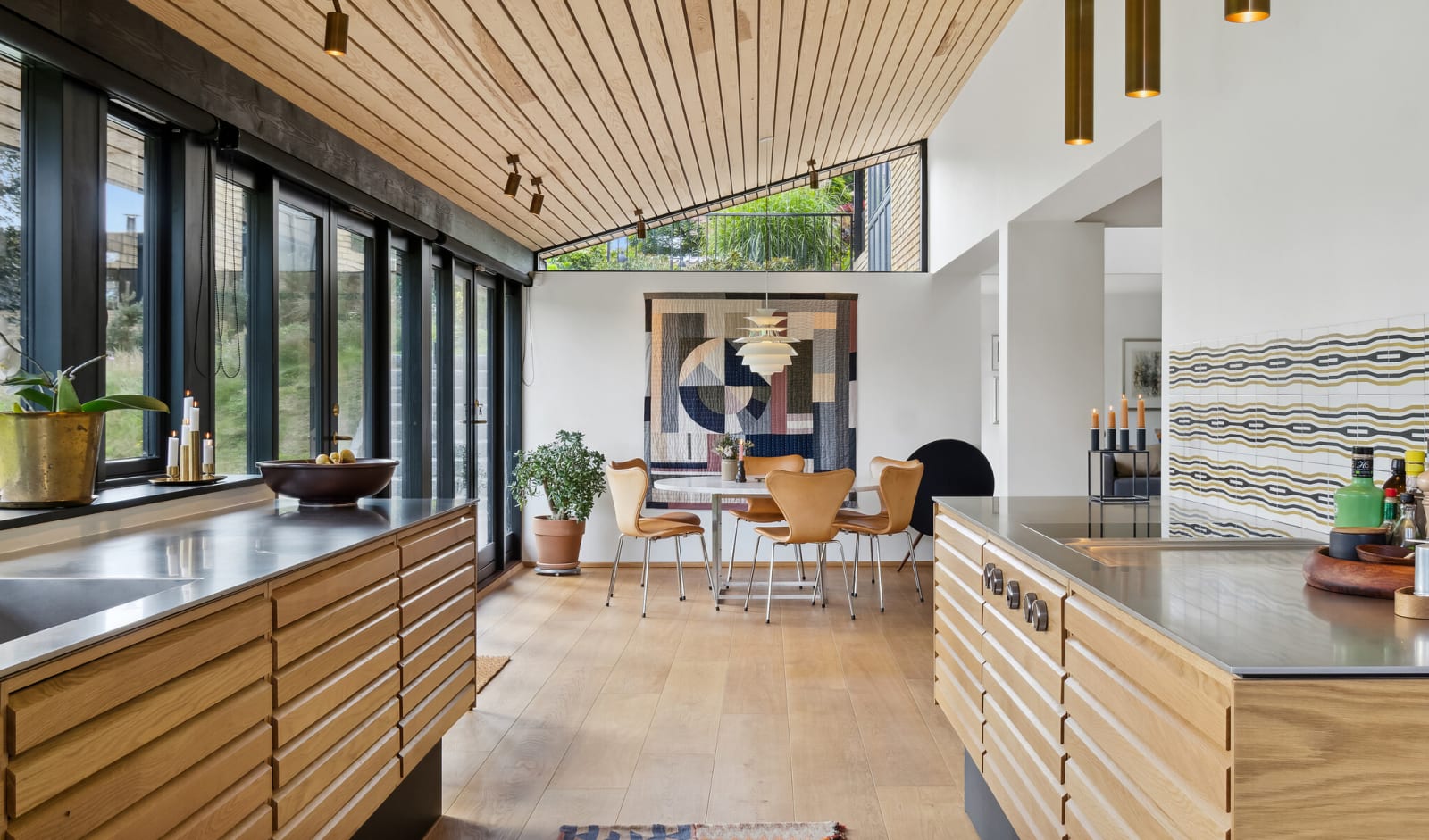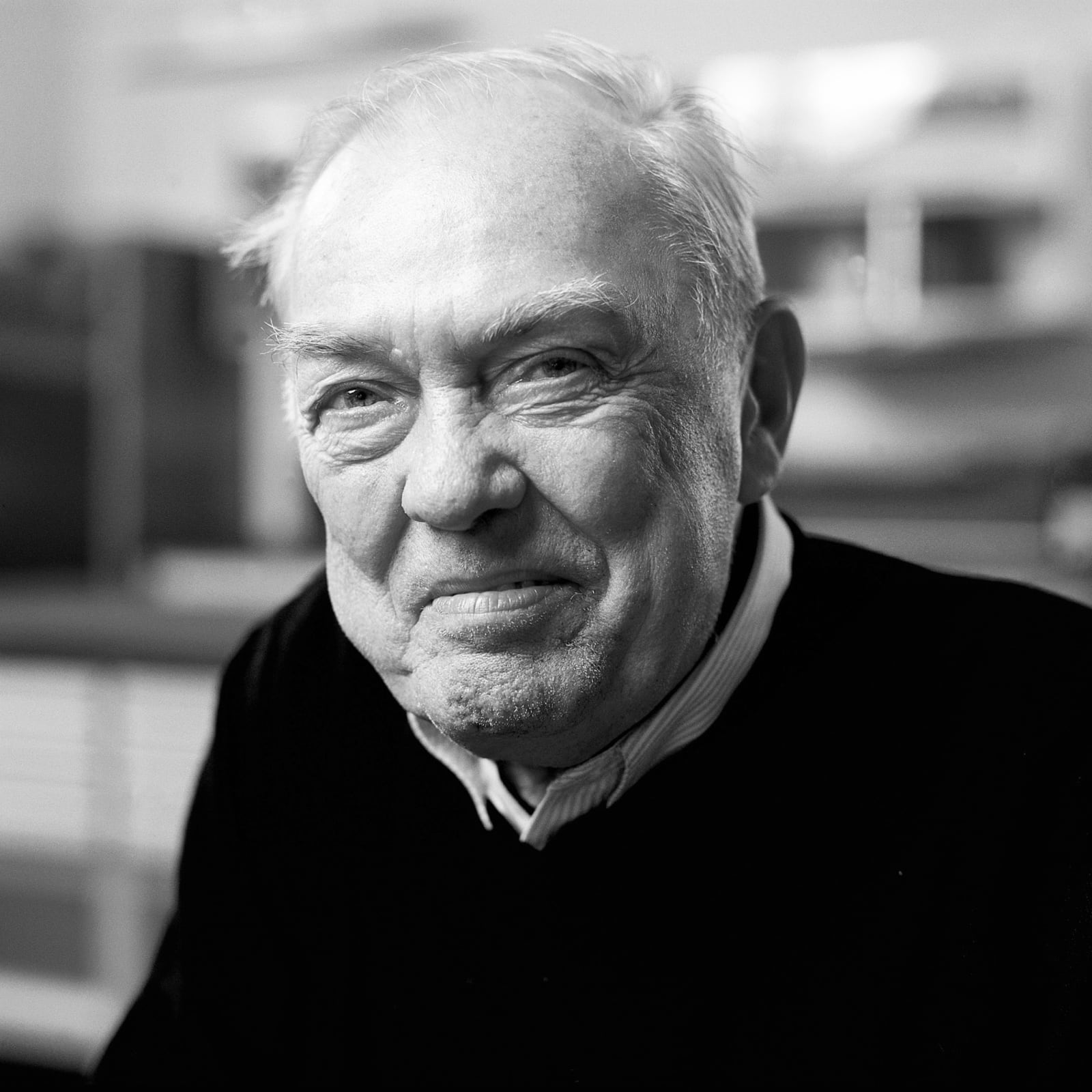An error occured
Try again later
No search results
No search results
You don’t just throw out old furniture classics
Kitchen model
Classic
Wood
Oak
Peter and Marie-Louise knew the house well in advance. The beautiful architect-designed 1970s’ yellow brick property with its large glass windows and unique black-green tiles. Behind the unspoiled facade, however, the tactile elements had been supplanted with smooth plaster ceilings and large ceramic floor tiles. The couple therefore set about carefully renovating the house so that the period details were revealed and highlighted.
The original architectural qualities have been reinforced by highlighting the visible structures, by re-establishing panelled ceilings and by laying new oak floors that harmonise beautifully with the original slate floors.


A classic bespoke kitchen
The uno form bespoke kitchen was already in the house when Peter and Marie-Louise took it over. In a classic beech version with white laminate fronts.“Basically, the kitchen had a classic design and extremely good elements which suited the house well, and when we started looking around at new kitchens, it soon became clear that a new kitchen would never match the quality of the existing one,” says Marie-Louise.
However, the couple wanted to replace the beech and the white laminate with oak, and through the previous owners established contact with Steen Asbjørn at uno form Copenhagen, who had designed the original kitchen. Together, they created a new, but contemporary look by reusing most of the cabinets, supplementing with several new units, and by replacing all the beech front frames, slats and panels with solid oak versions.


The 1970s mark the beginning of the modern open-plan kitchen-diner that we know today, and Peter and Marie-Louise had no hesitations about removing the wall between the kitchen and the living room. Where the tall units previously stood, there is now a beautiful and functional piece of furniture with an integrated BORA Professional 3.0 cooktop and cooktop extractor. The worktop is made of solid 8 mm steel with curled surface, and has a light and floating look thanks to the 10 mm black oak strip that separates the cabinets and the countertop.
The tall units were moved to an existing niche in the kitchen, and feature a recessed moulding with a gap around the cupboards for emphasis. This draws attention to the classic, solid front frames while dispensing with the need for a ventilation grille.
Quality gives the kitchen a long life
Sustainability is not just about materials. It is just as much about design. About timeless and uncompromising design that can last for decades.
Arne Munch designed the iconic Classic kitchen in 1968 based on his vision that a kitchen should be a functional and beautiful piece of furniture in its own right. More than 50 years later, the design endures, and it is therefore possible to replace the front frames and slats and even supplement with extra cabinets while preserving and reusing fully functional cabinets and drawers. In this way, you can breathe new life into a kitchen and in so doing help to conserve valuable natural resources.
For Peter and Marie-Louise, it felt completely wrong to throw out a classic kitchen, and Marie-Louise is delighted that the original kitchen is now enjoying its third life.“The kitchen which the previous owners installed in the early 2000s was a display kitchen, so it had already had its first life in an uno form showroom. Now it has been given a new lease of life again – and the beech and white laminate fronts are also living on, as they were bought by another family for their new kitchen project,” says Marie-Louise.


About this kitchen
Where?
Architect-designed 1970s house in Denmark



